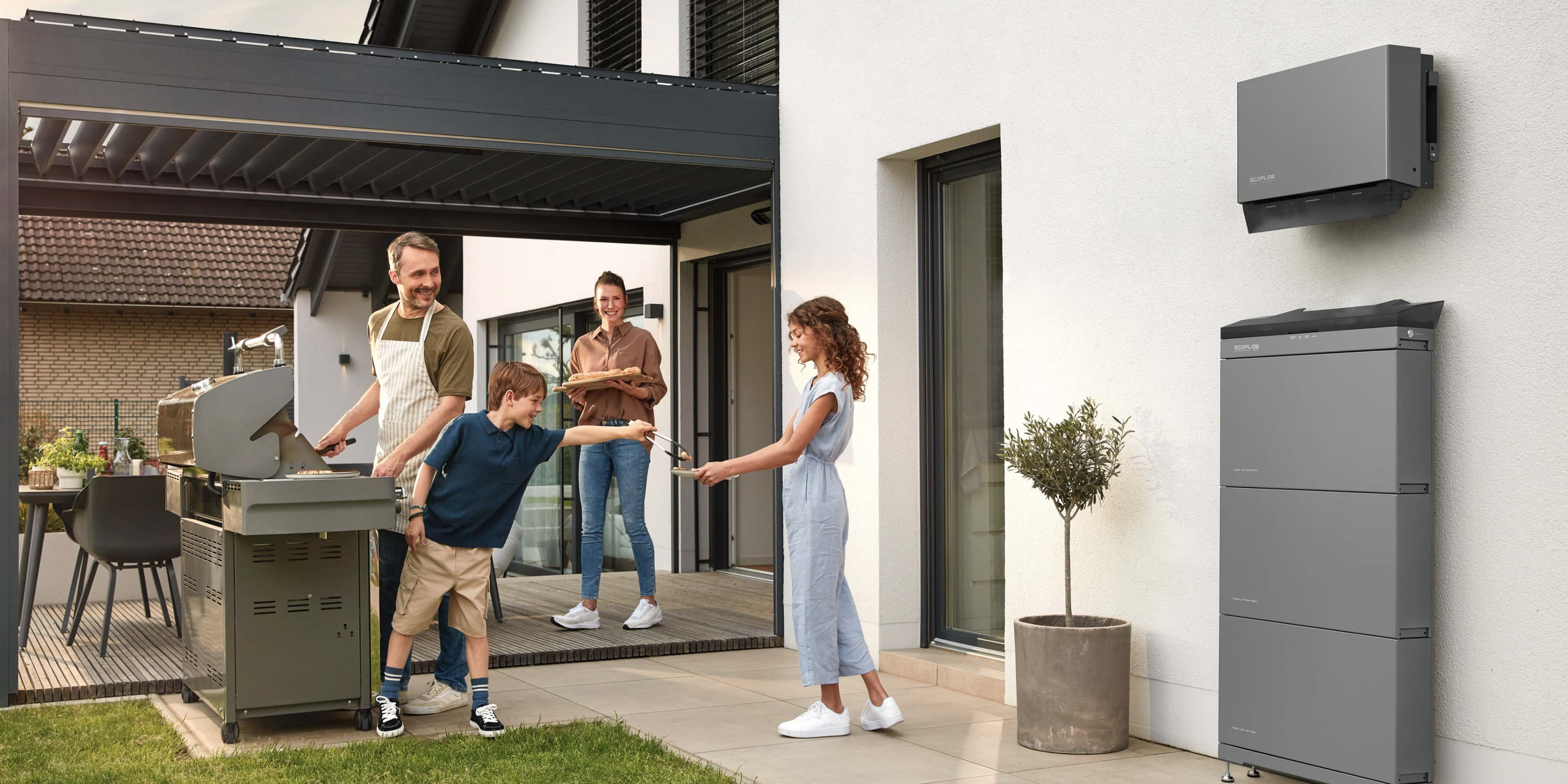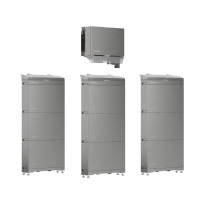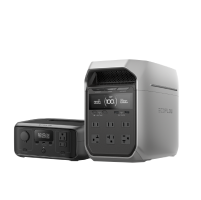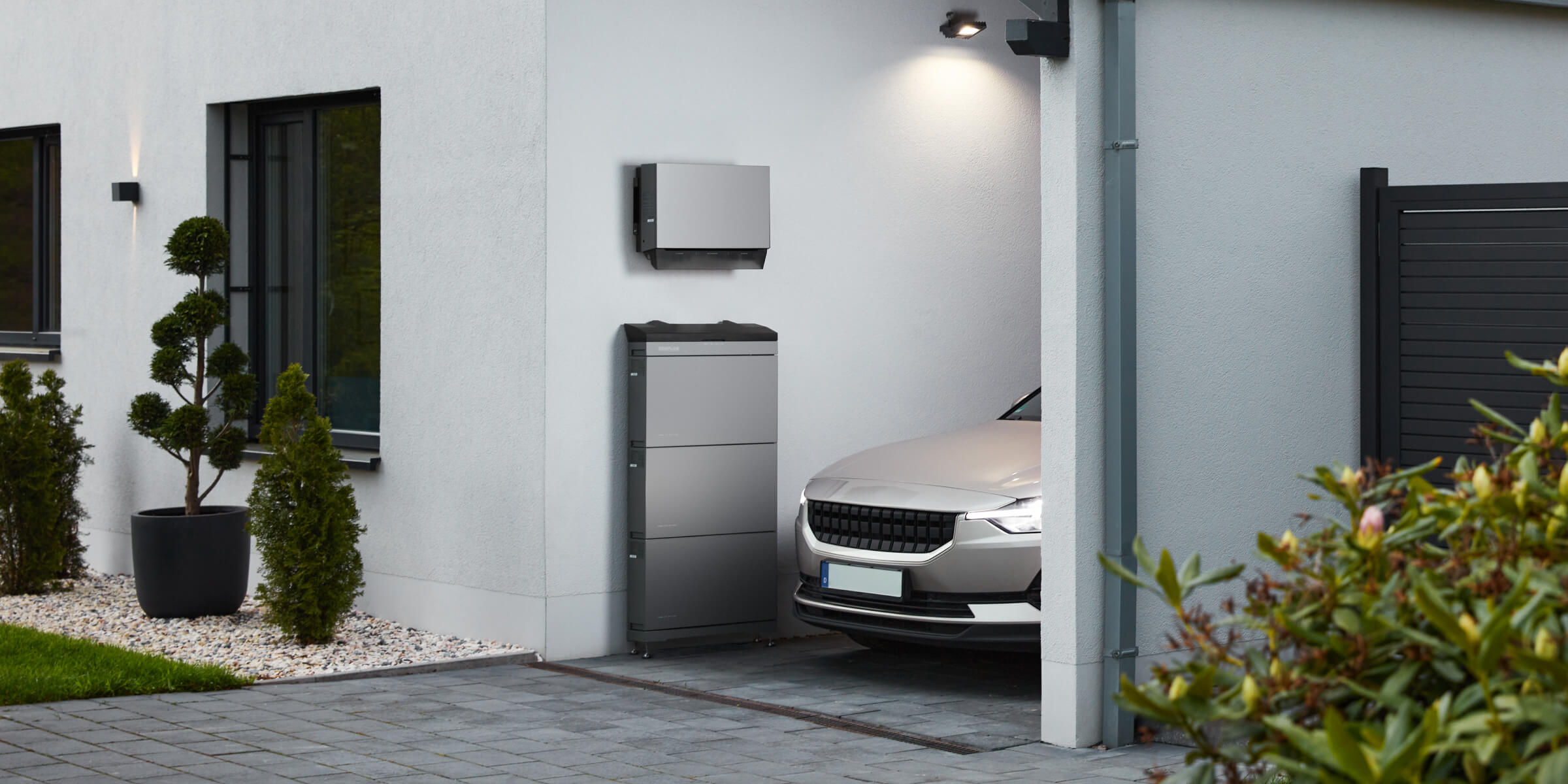Solar Panel Efficiency: How It Affects Home Battery Performance
When you install solar panels at home, efficiency is more than just a technical term—it directly affects how much clean energy you can store, use, and save. And in the UK, where sunshine can be shy, every bit of captured light counts. Solar panel efficiency is more important than ever.
You can make the most of every kilowatt generated with advanced solutions from EcoFlow, such as PowerOcean and AI-Powered HEMS.
Understanding Solar Panel Efficiency
Solar panel efficiency refers to how effectively your panels convert sunlight into usable electricity. In the UK, the average annual yield for residential solar systems ranges between 850–1,050 kWh per kWp installed. That means, a 4 kWp system can generate roughly 3,400–4,200 kWh per year.
The higher your panels’ efficiency, the more power you can make even with a small roof. Modern panels now reach over 22% efficiency, a big improvement from a decade ago. This matters most in places with less sunlight, like northern England or Scotland, where every extra bit of efficiency adds up to more total energy.
Why Solar Energy Efficiency Matters for Battery Charging
Your solar panels are just the first link in an energy chain that includes the inverter and home battery system. Each step in this chain determines how much of your solar power becomes usable electricity.
Panel Performance
Your panels are where it all begins. Their output depends on sunlight, angle, and shading. For instance, south-facing panels tilted around 30–40° tend to capture the most sunlight in the UK. Even with cloudy skies, modern panels and smart energy systems can still generate steady power.
EcoFlow’s AI-powered Home Energy Management System (HEMS) helps by predicting solar generation and automatically using surplus energy for home use or battery charging, so you make the most out of clean solar energy.
Conversion Pathway
Solar panels produce DC power, but homes usually use AC power. The type of inverter you have affects how efficiently this power is converted.
Here’s how they work: DC-coupled systems send energy straight from the panels to the battery before converting it to AC. This process keeps energy loss low. Meanwhile, AC-coupled systems convert the power several times, which means a bit more energy is lost, but they’re easier to add to existing solar setups.
Battery Storage Efficiency
Even after charging, some energy is lost when power is stored and used again. Home battery storage like EcoFlow PowerOcean keeps this loss low with smart design and built-in heating pads that help it work well in both cold and warm weather.
Installing the battery near your fuse box also helps reduce energy loss. Since most batteries can’t use 100% of their capacity, the AI SmartEarning Mode in HEMS helps by storing energy when prices are low and using it when rates go up.
Solar Power Efficiency UK Factors
Even the most advanced solar panels perform differently depending on where and how they’re installed. Solar power efficiency in the UK is shaped by the following factors:
Sunlight and Climate
How much power your panels make depends on how much sun your area gets. Across the UK, there are about 1,340 sunshine hours a year, or around 2.5 peak sun hours per day—equal to about 900–1,100 hours yearly. The South East and South West get the most sunlight, often making 30% more power than northern areas.
Even on cloudy or short winter days, solar panels still work because they use daylight, not just direct sunlight.
Orientation, Tilt, and Shading
The angle and direction of your panels play a big role in how much energy you generate. In the UK, the ideal setup is a south-facing roof with a 30°–40° tilt, which captures the most sunlight throughout the year. Homes located further north may benefit from a slightly steeper tilt, while small seasonal adjustments—lower in summer, higher in winter—can fine-tune performance.
However, even with the right angle, shading can make a noticeable difference. Obstacles like trees, chimneys, or nearby buildings can block sunlight for parts of the day, cutting energy output by 5–30%.
Because of this, the MCS shading factor method (SAP 10) is used to estimate losses before installation. It shows that even a modest 5% reduction in sunlight can slightly delay your system’s payback period.
To counter these effects, modern systems use smart MPPT (Maximum Power Point Tracking) technology, which automatically adjusts power flow to reduce shading losses.
Temperature Effects
Solar panels naturally lose a bit of efficiency as they heat up—typically around –0.35% for every degree above 25°C. This drop doesn’t happen all at once; it’s a gradual decline that starts once the cell temperature rises past the standard testing level.
Fortunately, the UK’s mild weather keeps panels cooler for most of the year, meaning less heat-related loss and slightly better overall solar power efficiency compared to hotter countries.
Matching Panel Output to Battery Capacity
When it comes to solar and battery systems, bigger isn’t always better. If your battery is too large compared to your solar panels, it won’t fill up regularly, especially during cloudy or winter months when sunlight is limited. That means you’ve paid for capacity you can’t fully use.
Meanwhile, if your battery is too small for your solar setup, any extra energy your panels generate will be sent back to the grid under the Smart Export Guarantee (SEG). While SEG payments offer some return, the rates are usually low (around 5–15p per kWh).
For most UK homes, a 4 kWp solar array paired with a 5–10 kWh battery strikes a good balance. A 5 kWh battery can usually cover evening use, while larger homes or those with electric heating might benefit from a 9–10 kWh battery.

How Efficiency Translates into Real-World Savings
Solar power efficiency is not just a buzzword. Here’s what you should know:
Increasing Self-Consumption
Most UK homes use only about 30–40% of what their panels generate. Adding a battery can raise that to around 60–75%, since you can store extra energy during the day and use it at night. When your solar panels and battery are well matched, you get the most out of every kilowatt.
Financial Impacts
The more electricity your panels produce and store, the faster your system pays for itself. At current UK rates—around 28p per kWh to import from the grid and about 10p per kWh to export—each stored kilowatt-hour saves roughly 18p. For a typical home, adding a battery can raise annual savings from about £380 to over £800.
Do solar panels increase home value?
Homes with solar panels often sell for 6–7% more, thanks to lower energy bills and better energy ratings. Buyers see them as a smart, future-ready upgrade that cuts costs and boosts efficiency.
What kind of product or solution are you interested in?


Smart Controls and Tariffs: Getting the Most from Solar Efficiency
Smart energy management systems charge your battery when electricity is cheapest and power your home when rates are high, reducing grid use and boosting savings.
With dynamic tariffs, you can charge overnight at low prices and use or sell that energy during peak hours. Pairing your setup with EVs or heat pumps maximizes solar use by covering transport and heating needs. Together, smart controls and flexible tariffs make your solar system work smarter.
Solar Energy in England: Why Efficiency and Storage Are Linked to Policy Goals
The UK’s plan to reach net zero relies on flexible, local energy systems. Solar panels with batteries help by storing extra power and keeping the grid steady when sunlight is low. The SEG program pays homeowners for exported power but makes it cheaper to use what they produce.
As energy prices rise, battery storage also helps you cut bills and depend less on the grid. Together, energy efficiency and storage make homes more resilient and support the UK’s goal of a cleaner, more secure energy future.
FAQs
How many peak sun hours does the UK get?
The UK averages about 2.5 peak sun hours daily, or roughly 900–1,100 per year. Southern regions like the South East get up to 30% more sunlight than northern areas, making them ideal for solar panel efficiency and higher energy yield.
Do solar panels still work on cloudy days?
Yes. Solar panels produce electricity from daylight, not just direct sunlight. Even during cloudy weather, they can generate 10–25% of their normal output, helping UK homes cut energy costs year-round despite less consistent sunshine.
Can adding a battery double my solar savings?
Yes. Without a battery, most homes use only 30–40% of their solar power. Adding one boosts usage to 60–75%, letting you store excess energy for evening use and potentially double your annual savings by avoiding costly grid imports.



